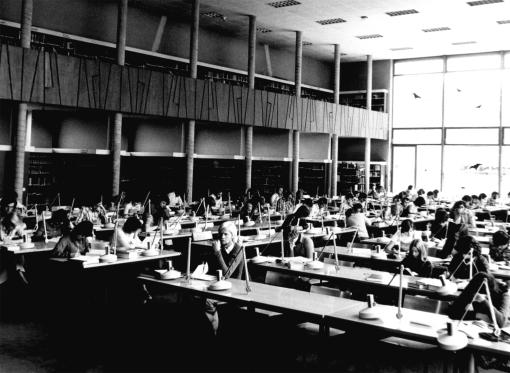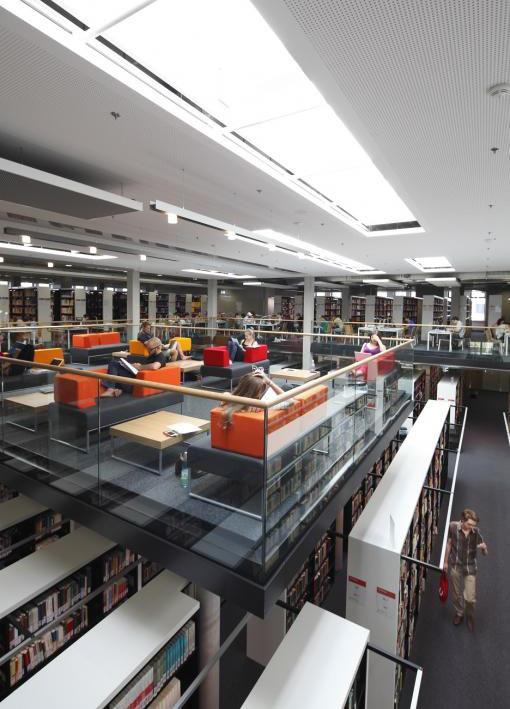Past
The Old University of Mainz, founded in 1477, already had a University Library. Its origins, however, are unknown. It was last located in the so-called “Neue Burse” on Neubrunnenplatz in Mainz and comprised around 80,000 volumes. The famous circumnavigator Georg Forster was one of the last library directors. After the closure of the university by the French revolutionary troops, the library became the property of the city in 1805. The books from the old University Library can still be found today in the holdings of the Municipal Scientific Library.
After the university was re-established in 1946, the University Library had to be completely rebuilt. The first library director, Walter Menn, only found 3,000 books when he started work in the summer of 1946. The situation in the numerous institute and seminar libraries was similar. With the active support of the occupying French authorities, however, the inventory was quickly supplemented and expanded. The library was initially housed in a very cramped space in the main building at the Forum. The reading room, for example, was more of a reading chamber with only 20 workspaces.
A new building was therefore the primary goal. However, it was not until 1964 that the library was able to move into today’s Central Library building on Jakob-Welder-Weg. For the first time since 1477, the University Library was located in a building that had been specifically built and met the technical requirements for a library. However, in view of the increasing number of students, this building quickly proved to be too small. Additional storage space had to be created with a false ceiling in the reading room and by renting outside stacks.
The services for library users have continued to improve since the 1970s due to the expansion of the open stacks area and of the information and advisory services. The digital age for the University Library began in 1997 with the launch of the online catalog. The voluminous card catalogs, which continued to shape the entrance hall into the 21st century, were gradually phased out. From now on, electronic media become increasingly important, while the print holdings lose more and more of their importance.
In 1990 there were still 90 individual libraries at Mainz University, which were gradually combined to form Branch Libraries and integrated into a shared library system.
Present
In addition to the Central Library, the University Library now includes seven Branch Libraries.
In recent years, the University Library has also opened up new fields of activity by taking over the University Archives, the Service Center for Digitization and Photo Documentation, and the Center for Audiovisual Production. It has also been involved in coordinating the University Collections, in the Academic Integrity Project, in promoting Open Access, in supporting university-wide activities in the field of research data management, and in managing the experimental space “Schule des Sehens”.
With over 3.5 million printed media, around 30,000 e-journals and well over 100,000 e-books and e-papers, as well as around 3,500 work places, today the University Library is the central information service provider for students and researchers at JGU. However, as was the case in the 1950s and early 1960s, the question of finding a modern space for learning with contemporary premises for the library holdings has become relevant again. Hence, building a new library is once again the primary goal.



